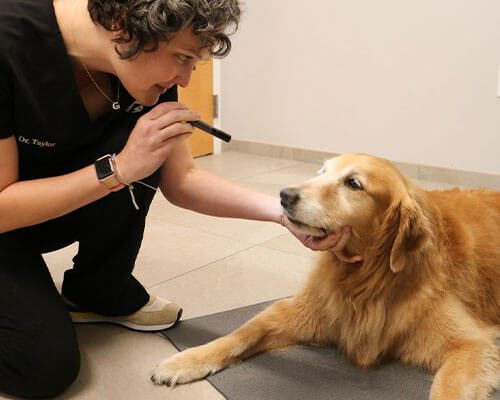Vestibular disease in dogs can be distressing, causing disorientation and balance problems in our furry companions. Learning about this condition and its available treatments is crucial for ensuring the well-being of affected dogs.
What is Vestibular Disease in Dogs?
Vestibular disease in dogs affects the balance and coordination controlled by the vestibular system in the inner ear. It can present as a sudden onset of symptoms, including head tilting, loss of balance, rapid eye movements (nystagmus), and in severe cases, difficulty standing or walking.
Causes and Types of Vestibular Disease
Peripheral Vestibular Disease: Caused by issues in the inner/middle ear, such as infections, inflammation, or the presence of tumors.
Central Vestibular Disease: Arises from problems within the brain itself, including tumors, strokes, or neurological conditions.
Diagnosing Vestibular Disease in Dogs
Veterinarians diagnose vestibular disease in dogs through physical examinations, observing symptoms, and ruling out other potential causes through blood tests, imaging (MRI or CT scans), and sometimes spinal taps to evaluate neurological function.
Recommended:
- Petco Review: The Power of Together
- PetSmart Review: Where Pets Inspire Us
- Hill’s Pet Nutrition Review: Pioneering Pet Health and Nutrition
- Royal Canine Review: Tailored Nutrition for Every Pet
- Chewy Review: Pet Care at Your Doorstep
Vestibular Disease in Dogs: Treatment Approaches
- Supportive Care: Providing a calm environment and keeping the dog comfortable during the acute phase of the disease is essential.
- Medication: Anti-nausea drugs may be prescribed to manage vomiting, while antibiotics can treat underlying infections.
- Fluid Therapy: Intravenous fluids might be administered to keep the dog hydrated if they have difficulty eating or drinking due to severe symptoms.
Recovery and Management
Recovery from vestibular disease in dogs varies. Some dogs show improvement within days, while others might take weeks to months. Supportive care, patience, and a quiet environment aid in their recovery.
Home Care for Dogs with Vestibular Disease
- Monitoring: Watch for improvements or worsening of symptoms and report any changes to the veterinarian.
- Assistance: Provide support for walking or moving around, ensuring safety to prevent injuries.
Conclusion: Supporting Dogs Through Vestibular Disease
Understanding the signs, causes, and available treatments for vestibular disease in dogs is crucial for pet owners. With appropriate veterinary care, supportive measures, and patience, dogs affected by this condition can often recover and regain their balance and quality of life.
References:
- American Kennel Club (AKC) – “Vestibular Disease in Dogs.” AKC provides insights into vestibular disease symptoms and management.
- VCA Hospitals – “Vestibular Disease in Dogs and Cats.“ VCA hospitals offer information on vestibular disease symptoms and diagnosis in dogs.


